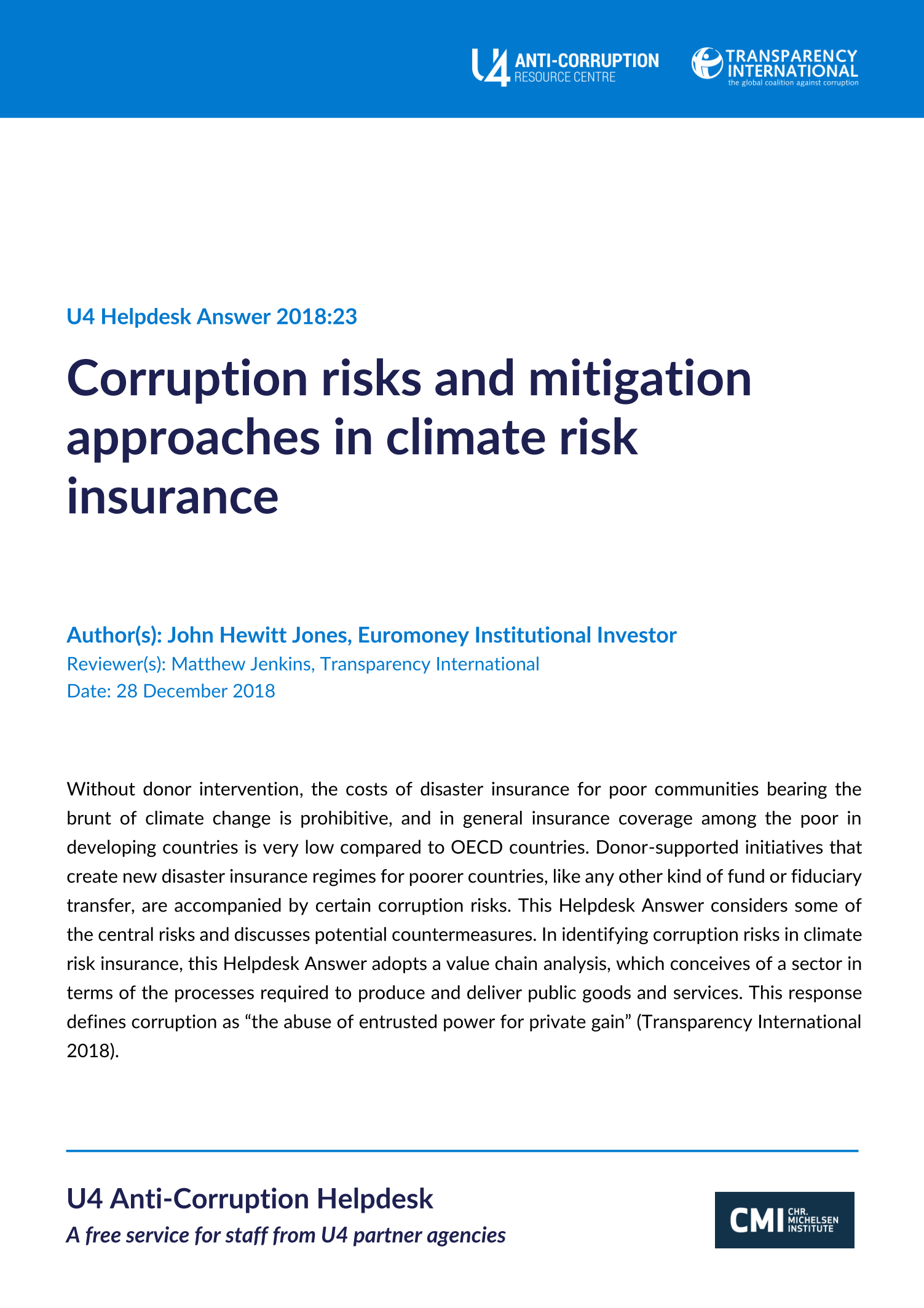Main points
- Value chain analysis is a useful way to map corruption risks at sector level (Campos and Pradhan 2007).
- Risks can be characterised according to whether they occur at the stages of policymaking, organisational resources or client interface along the value chain (Transparency International 2017).
- To gain meaningful insights, it is necessary to go beyond high-level mapping of corruption risks and conduct bespoke appraisals of different sectoral value chains.
- Key remedies for corruption risks associated with this type of finance include greater claims disclosure, simpler contracts and an increase in civil engagement.


